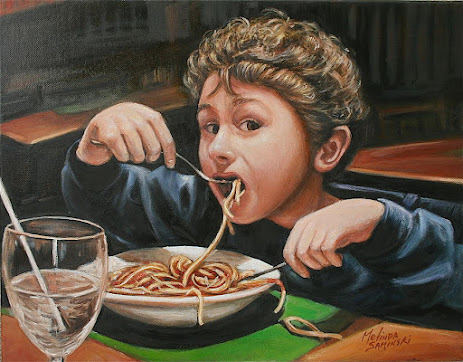The word "pasta" comes from the Italian word "maccarruni" which means "made into a dough by force". In Italian language maccarruni (macaroni) called as "pasta".
During 1270s, there is a reference to a soldier in the northern Italian city of Genoa, who owned a basket of “macaronis.” A century before, the Muslim geographer al-Idrisi wrote of seeing pasta produced on Sicily. He wrote that the art of making spaghetti or the thinner vermicelli, reached Sicily with the North African caravans in about AD 11oo. On that island they found the essential requisites: hard-grain semolina wheat, sweet water and abundant sun and wind to dry the rolled-out product.
In the 1500s dry pasta manufacturers were founded all over the Italy. The dough was mixed by foot and compressed by 3-4 workers sitting on a long wooden pool. The dough was presses into bronze plate as vermicelli, trennette, lasagnette, farfalle, pennette, conchiglie and other pasta forms, still known today.
Pasta’s great companion, the tomato was bought to Italy by the Spaniards and appears to have been grown in Siena in the 1560s and the Naples area in 1596.
The French Dominican monk Jean-Baptiste Labat (1663–1738), who traveled through Italy at the turn of the 18th century, discovered a flourishing pasta industry there. The combination of the manual brake and the extrusion press, which began to spread in the second half of the 16th century, had revolutionized the production of pasta, considerably increasing output without in any way harming quality.
Early days of processing pasta in Italy
 |
| Spaghetti Boy Painting by Melinda Saminski |